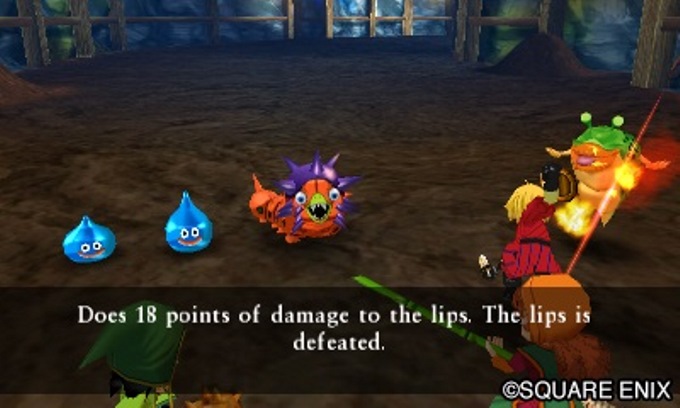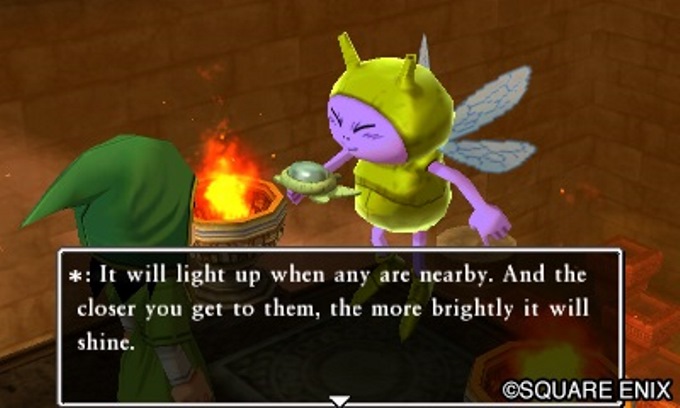[Review] Dragon Quest VII: Fragments of the Forgotten Past
Gaining access to the class system was the point where I felt that the entire game really opened up. This revolves around you giving specific party members certain jobs or classes, like Mage, Warrior, Priest, Jester, or Thief. Each one excels in certain stats and lacks in others, and comes with a variety of helpful abilities that you gain through using that class for a certain amount of time or until you level it up to its max potential. As a character stays in a certain class and fights, that class slowly levels up and gains new abilities. After gaining those abilities, that party member keeps them even after switching classes. Choosing which party member takes what class can either be used strategically or can be based on personal preference. All of the classes feel relatively balanced and each one has its own benefits. Of course, there are classes that are tailored to specific party members, but each one is accessible by everyone. So if you want your main hero to be a Mage first, there’s nothing stopping you from doing so except the enemies around you. If you use your abilities and other party members to your advantage, you shouldn’t have a problem using any particular class as long as there’s some variety among your party.
When the class system became available, that’s when it felt like strategy really became imperative to combat encounters and boss battles. Enemies would increase in number and use spells similar to the abilities you now had access to. Bosses were given two attacks in one turn that could damage the entire party, debuff, or add status effects like sleep and poison. It was during encounters like these where the depth of the combat system really shone through and I really had to start paying attention and planning my party’s next series of actions. Using inventory items and abilities became invaluable in combat encounters and managing the parties Magic Points was a constant element of battle. The early combat was never really unbearable, but once the class system was accessible combat began to feel less and less like a chore.
This brings up the topic of balance, and from what I experienced, Fragments of the Forgotten Past handles this aspect fairly throughout. I only had to grind a couple of times, and when I did it wasn’t because a boss kept wiping me out, but more so because I didn’t feel my party was as prepared as we could be. There was only one instance throughout my time spent with the game where a boss felt a little unbalanced, and while it was very frustrating, with a lot of perseverance, strategy, and a tiny bit of luck I was able to come out on top without the need to halt my progress and grind.
Fragments of the Forgotten Past is an absolutely massive JRPG, so it’s somewhat surprising that the entire game was able to be compacted into a 3DS release. That being said, it does suffer a bit from a technical standpoint as a result. There are noticeable fade-ins of far off trees or foliage when roaming the world map and it’s by no means the prettiest looking game on the system. Most of the character models look slightly rough and jagged and many of them are reused throughout the many different islands. This can feel a bit jarring, especially when you move to a completely new island and end up seeing an ordinary villager that looks nearly identical to the named NPC you just spent two hours helping out. The visuals rarely ever hinder the experience though, as the only time I felt the limitations of the 3DS detracted from the experience was the quality of certain animations. Some specific story-related cut-scenes and animations are very complex and elaborate, whereas some have NPCs sharply turning on their scripted path all the while completely phasing through your entire party on their way out of the scene.
As Dragon Quest VII on 3DS is a remake of a title that was originally developed for the PlayStation, I was curious to see just how much was redone, and it was clear that some areas received a bit more attention than others. The two elements that received the biggest overhaul was the entirety of the dialogue and text plus the overall visuals. The game is no longer sprite-based and is entirely 3D, from the overworld map to enemy encounters. This is unfortunately somewhat of a double-edged sword as it looks better than it ever has, but because of the huge size of the world, it now takes a lot longer to traverse maps and islands compared to the original – at least in the early sections. Fragments of the Forgotten Past retains almost all of its original artwork and character designs, but some assets have been updated and completely redesigned for the 3DS. The soundtrack is remastered as well, using more up-to-date electronic instruments. While the updated soundtrack isn’t bad or forgettable by any means, it’s not going to blow you away. The tracklist is relatively small, but the songs that are present are varied and catchy. I would often find myself whistling along while exploring the different towns or fighting monsters.
Along with a new coat of paint, Fragments of the Forgotten Past also received a handful of very helpful updates to its gameplay. The combat system remains largely unchanged, but classes now level up faster to help with pacing, which is extremely helpful. Enemies can now be seen in the overworld, so the only time there are completely random encounters like in the original title are when you are sailing to new islands. There are also many new additions that help prevent players from getting stuck, like the new fragment radar that glows brighter the closer you get to a fragment and menu tabs like “Next Tablet Fragment” and “The Story So Far” which help give you reminders and clues as to what you were doing and where you should think about heading next. I appreciated these additions immensely and used them constantly throughout my time playing. StreetPass functionality has also been added letting you send tamed monsters out to explore and receive Traveler Tablets, the latter of which allow access to extra dungeons, updates to your personal town known as The Haven, and special story-related cut-scenes. These features are completely optional, but still feel like fully realized additions.
The one thing I wish would have been given more attention is the game’s UI. It feels a bit slow and outdated, and while it’s not a mess to navigate through, it takes a fair bit of getting used to and slows down the experience just that much more.



